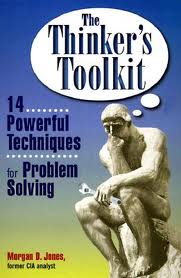
Sorting
Sort your problem into its component parts.
Sorting is probably the most basic structuring technique. Its importance should not be overlooked. Sorting can show patterns, trends, similarities, differences, anomalies, and outliners.

Take the items listed in Factors and begin to group them into their component parts. In-other-words, group similar factors together.
Part of this exercise is to begin to determine what Major Categories you'll be using to group your data. Choose your major categories very carefully! This is because the major categories you use to sort your information will begin to form a schema. This schema is the basic structure in which your data will be systematized.
How you sort your data can also provide many insights into how you are currently viewing your problem:
- Did you group your factors in order to help answer your Key Questions?
- Are there misleading Assumptions inferred in your determinations about the similarities between your factors?
- Do your major categories fit together into a cohesive whole?
Sources:
 |
The Thinker's Toolkit: 14 Powerful Techniques for Problem Solving by Morgan D. Jones, New York: Three Rivers Press, 1995. |
 |
Structured Analytic Techniques For Intelligence Analysis by Richards J. Heuer Jr. and Randolph H. Pherson, Washington, DC: CQ Press, 2011. |

